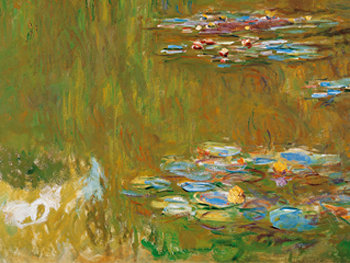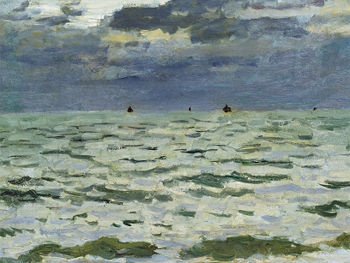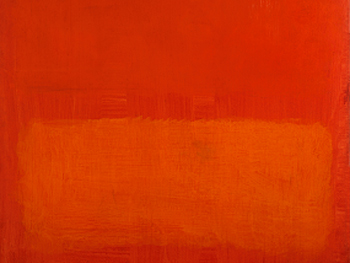
The Museo Thyssen and the Fundación Caja Madrid are offering an updated perspective on the oeuvre of this Impressionist master
«Monet y la abstracción»
MUSEO THYSSEN-BORNEMISZA
Paseo del Prado, 8
28014 Madrid
Del 23 de febrero al 30 de mayo de 2010
De martes a domingo, de 10:00 a 19:00 horas
From the 23rd of February to the 30th of May 2010, at Museo Thyssen-Bornemisza and Fundación Caja Madrid, Madrid
Curator: Paloma Alarcó
Organisers: Museo Thyssen-Bornemisza, Musée Marmottan-Monet
Surveying Monet’s output from a new and innovative perspective, namely his relationship with the birth and development of the abstract movement in the second half of the 20th century, is the goal of the sweeping exhibition presented by the Museo Thyssen and the Fundación Caja Madrid in conjunction with the Musée Marmottan.
Monet’s obsession with capturing the fleeting moment, a constant feature throughout his entire artistic career that was heightened in the last years of his life, led him to blur his pictorial representations, bringing him to the verge of abstraction. That is what he did in his ethereal views of London and the large canvases depicting his garden in Giverny, which he had designed himself just to be painted. These works in particular exerted an extraordinary influence over the works of the early American abstract artists, as well as their European counterparts, including Pollock, Rothko, de Kooning, Philip Guston and Gerhard Richter. Their works will be displayed in this exhibition in a dialogue with those of Monet that reveals their profound connections.
More than 100 pieces are on display in “Monet and Abstraction”. After a stint in Madrid, this show will then move on to Paris’ Musée Marmotan next summer. Many of the works have been lent by this museum, as well as by prestigious museums and collections from both Europe and the United States.
The most innovative and independent of the Impressionist painters let himself be carried away by his fascination with the pictorial representation of nature and tried to express personal experiences and feelings through it. This was the emotional facet that turned his landscapes into the harbingers of abstraction.
Monet’s oeuvre was practically relegated to oblivion in the first few decades of the 20th century owing to the surge in the constructive avant-gardes, Fauvism and Cubism. He did not begin to be rediscovered until the 1950s by artists within the then-incipient Abstract Expressionist movement in the United States, who viewed Monet’s output from a fresh new perspective which rendered it modern instead of obsolete.
The materiality of his painting, his blurred shapes, his loose brushstrokes and his all-over technique were copied and admired by both abstract artists and followers of Informalism. This exhibition is divided into seven sections, and it will be accompanied by a monographic course and a film series: Mists and Variations, Effects of Light, Reflections and Transparencies, Contrasts of Forms, Brushstroke and Gesture, In the Garden at Giverny and In the Wake of Monet.




